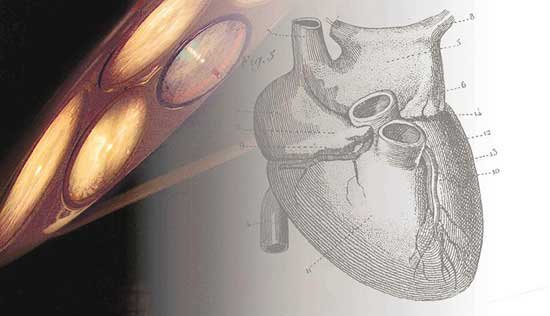Pacific Palisades ~ Palisadian-Post
Palisades Expert Warns about Liver Disease
January 09, 2008
Sue Pascoe , Staff Writer
The liver is not the most glamorous of organs and is rarely mentioned in song or prose. Yet liver disease is on the rise among 40- to 60-year-olds in the United States, which means this overlooked body part deserves a spotlight.
The Centers for Disease Control estimate that one in every 55 people in Los Angeles County have hepatitis C, the most common blood-borne illness in America. Alarmingly, two-thirds of these people are not aware they have the disease.
'It is getting worse and worse,' said Pacific Palisades resident Dr. Sammy Saab, an internationally known liver expert. 'People often contract the virus when they are in high school and college, but it takes two to three decades before the disease becomes full-blown.'
In fact, 'some 80 percent of the people in the beginning stages of liver disease have no symptoms,' Saab said. 'It's like high blood pressure--a silent killer.'
Saab explained that people afflicted with hepatitis C today might have experimented with needles or drugs decades ago, and one or two times may have been enough for them to contract the virus. Other major risk factors include blood transfusions that were done before 1992 and having kidney dialysis.
The only way doctors can diagnose early-stage liver disease is through blood tests, but if the disease is detected early, it's treatable.
'If you catch liver disease at an early stage, you can halt it or even reverse it,' Saab said. There are injections and pills for hepatitis C.
Many people are not concerned about hepatitis C because they thought they were immunized. Unfortunately, existing immunizations are only for the other two hepatitis viruses: A and B.
Hepatitis A is most commonly transmitted by the fecal-oral route, such as contaminated food. It does not cause permanent liver damage, but can make you sick for as long as four to six weeks.
The vaccine for hepatitis A is most commonly recommended if you travel outside of the country to areas where there is a high prevalence of the disease.
Hepatitis B is spread through blood and sex and for the most part people recover, but in some it can linger on and cause chronic liver disease. A vaccination for B is recommended for adults at increased risk of infections and all infants.
According to Saab, the liver is soft and mushy like tofu, but if one has untreated hepatitis or alcoholism, the liver becomes diseased and tissue is replaced with scar tissue, which makes it hard, leading to cirrhosis.
If cirrhosis goes unchecked, varicose veins develop in the esophagus (called esophageal varices) and the disease can progress to cancer of the liver. Those cancer patients need to be screened every six months.
'If we can catch liver cancer early, we can cure someone,' Saab said. 'And anyone with liver cancer should be considered for a liver transplant.'
Doctors are able to do a blood test that predicts how long a patient with liver disease can live, which is called a M.E.L.D. score (Model for End-Stage Liver Disease), which ranges from 6 to 40; the latter reflects more serious disease. The M.E.L.D. score determines the order for receiving liver transplants.
'Half of all liver transplants today are a result of hepatitis C,' Saab said.
Fatty liver may replace hepatitis C as a major problem in the future and is a result of lifestyle choices, Saab said. Those patients usually are overweight and have diabetes and/or high cholesterol.
'A fast-food diet gets converted to fat in our livers,' said Saab, who noted the alarming fact that '20 percent of California kids are obese.'
Fatty liver takes the same route as hepatitis C: liver damage that results in scarring and eventually produces cirrhosis, which can cause cancer or liver failure.
Saab's advice for preventing fatty liver is, 'Eat healthy, avoid fatty and sweet foods, exercise, and limit alcohol intake to one or two drinks a day.'
Saab, an associate professor of medicine and surgery at UCLA, is traveling to China in February to talk about hepatitis B and C, and liver transplants. In May he'll be featured at a conference in Canada and in July he'll lecture on liver transplants in Paris.
He and his wife Peggy have four children: Kenny, 10, Clara 9, Elena 7 (all of whom attend Corpus Christi School), and Adelaide, 4.

No comments:
Post a Comment